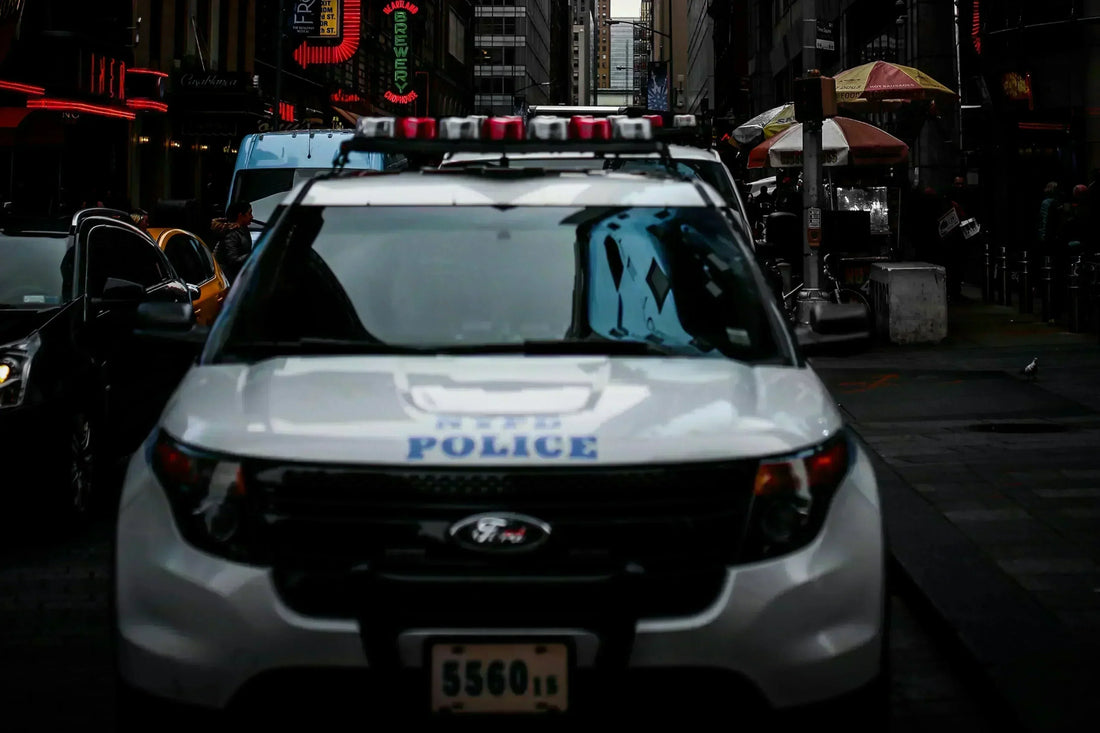Kids will be surprised by all the advanced technology at the disposal of officers when they are racing to an emergency or crime scene. There is so much more to the design and functionality beyond the obvious lights and sounds. While they may look like ordinary cars, besides the distinctive colors and lines, there is so much more so the materials, design, and functionality. Here is a list of interesting and little known facts about police cars that will surprise kids who are fascinated with the speed and drama when one goes racing by.

What Kids Never Knew About Police Cars
The lights, sirens, and sounds of vehicles speeding down the roads on the way to assist in an emergency or to catch a criminal always catches the attention of everyone they pass. Kids will love learning all about the technology and features built into police cars to protect the officers. Everything including the fast acceleration, powerful breaks, material of the seats, and built-in shields between the back and front seats are designed by engineers with safety in mind. Children's books about police cars share all sorts of valuable information about how officers use the lights and sirens to communicate with all the other drivers on the road, as well as with other law enforcement professionals. Here is a list of some familiar as well as little known police car facts that kids will find interesting.
Police Car Trivia For Children
Kids are fascinated with police cars for many reasons. These vehicles are incredibly engaging because they stimulate multiple senses: bright, flashing lights and loud, distinct sirens are both captivating and exciting for children, creating thrilling and memorable sensory input. The very idea of a fast-moving vehicle, especially one often seen in action, is inherently exciting. Beyond the immediate sensory appeal, police cars also open up a world of pretend play and storytelling. Children can easily imagine themselves as police officers, embarking on exciting missions, solving mysteries, and helping others. This kind of role-playing is vital for developing creativity, social skills, and empathy. Here are some fun facts about police cars to share with your children.

(1) The wear and tear of a police car is measured in hours, not in miles.
There is a meter on the dashboard of the car that determines how long the car has been on. This is far more important than measuring miles, like we do for regular vehicles, because police cars spend a lot of time idling.
(2) The back seat of police cars is not covered in cloth upholstery.
While criminals don't deserve a comfy ride to the station, this is not the reason. Too often, arrested individuals leave a mess that is much easier to clean when the seats are covered in plastic.
(3) Police cars are equipped with different siren sounds depending on the emergency.
There is a "howler" tone to warn vehicles up ahead to move out of the way. A "piecer" tone is used when police cars are attempting to navigate dense traffic. And a "wail" siren tone is used when a police car is moving at a fast speed on roads and highways.
(4) Police vehicles can reach speeds topping 150 miles per hour.
The exact speed range varies depending on the particular make and model of the car. The vehicles are designed so that officers have better control over the acceleration and handling compared to regular cars. The Ford Police Interceptor Utility is currently the preferred choice due to its fast speed ideal for chases combined with superior durability and space.
(5) The very first police car was put to use in 1899.
The world's first police car was an electric wagon deployed by the Akron, Ohio Police Department in 1899. This pioneering vehicle cost $2,400, could hit a top speed of 6 mph, and had a range of 30 miles before needing a recharge.
(6) The Ford Crown Victoria Police Interceptor was the most common police car in North America for decades.
Though discontinued, its legacy as an iconic police cruiser endures. Newer models, such as the Ford Police Interceptor Utility and Dodge Charger Pursuit, have since filled its shoes.
(7) Dubai is home to the most exotic police cars.
Police forces in affluent regions, like Dubai, boast fleets of exotic, high-performance cars including models from Bugatti, Lamborghini, and Ferrari. These aren't typically used for daily patrol, but rather for public relations and display.
(8) Most police cars have push bumpers.
Push bumpers are rugged, reinforced metal frames mounted on the front of many police vehicles. They are used to push damaged vehicles off the road, clearing traffic lanes and ensuring public safety without harming the police cruiser. Additionally, in high-speed pursuits, these bumpers are crucial for executing a "Pursuit Intervention Technique" (PIT maneuver). Here, an officer deliberately bumps a fleeing suspect's vehicle from the side to make it spin out and stop. The bumper's strength absorbs the impact, protecting the patrol car during this critical maneuver.
(9) Police cars are fitted with bullet-resistant panels.
Bullet-resistant panels, also known as ballistic panels or armor plating, are becoming more common in police cars. You'll primarily find them in the doors, but sometimes they're also integrated into the windshield or rear seats. Their main goal is to give officers and anyone else inside the vehicle an extra layer of protection against gunfire.
(10) All police cars have partitions separating the front cabin from the back seats.
Partitions in police cars are robust barriers installed within the vehicle. A standard feature in most patrol cars used for prisoner transport, they serve several crucial functions. Their primary purpose is officer safety, preventing detainees in the back seat from lunging forward to attack an officer, reaching for weapons or equipment in the front cabin, tampering with controls, or interfering with the vehicle's operation.




